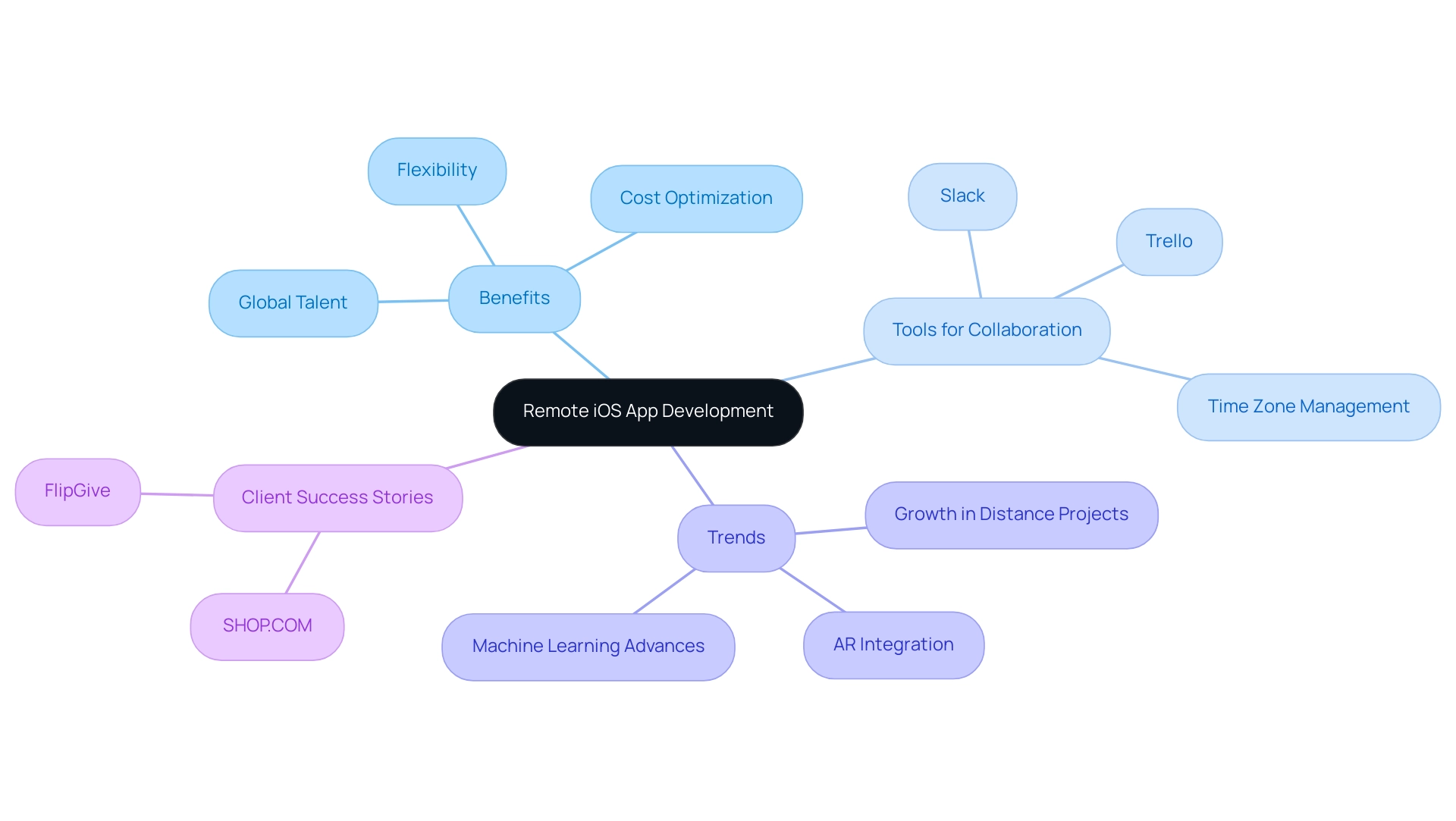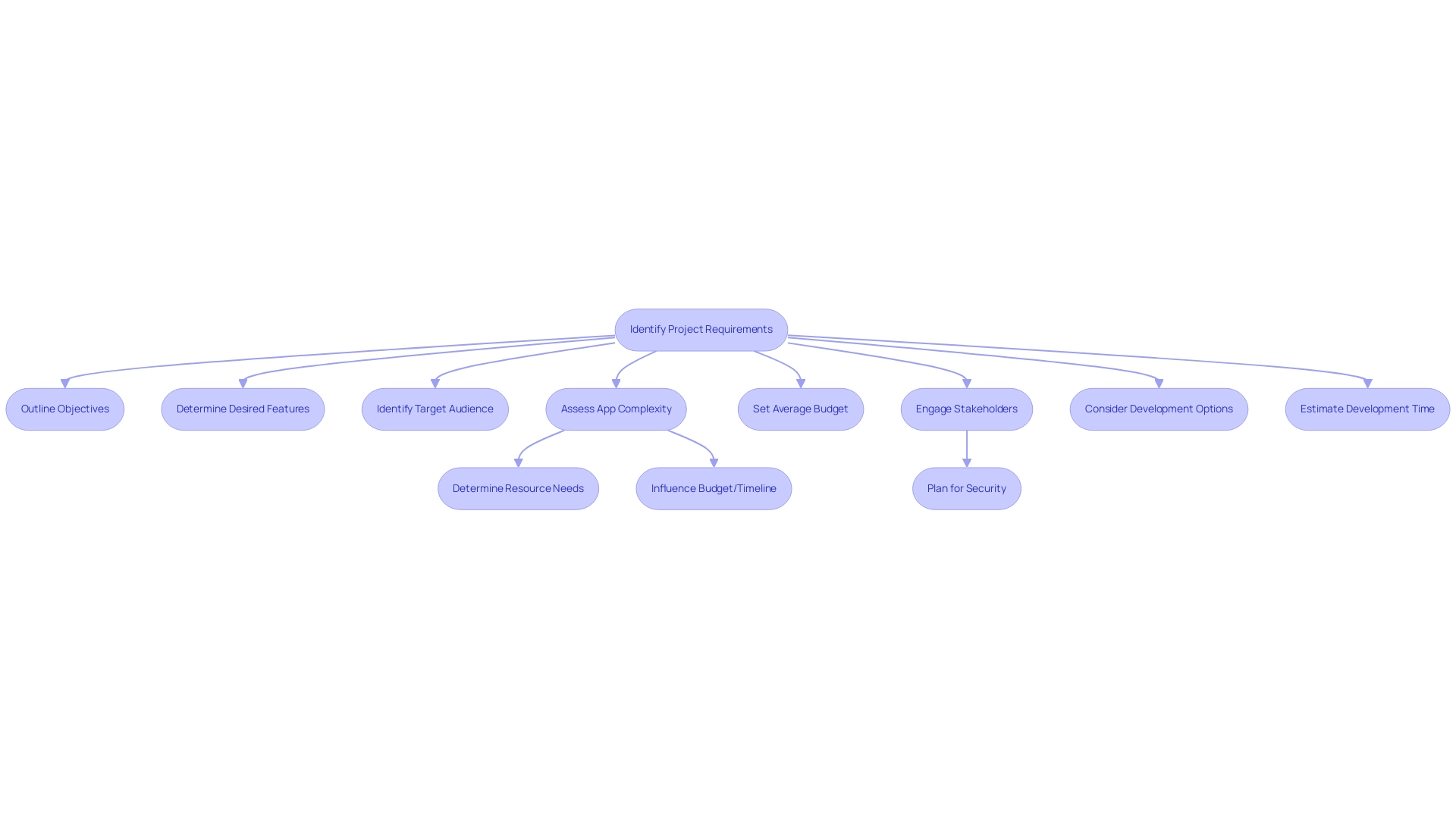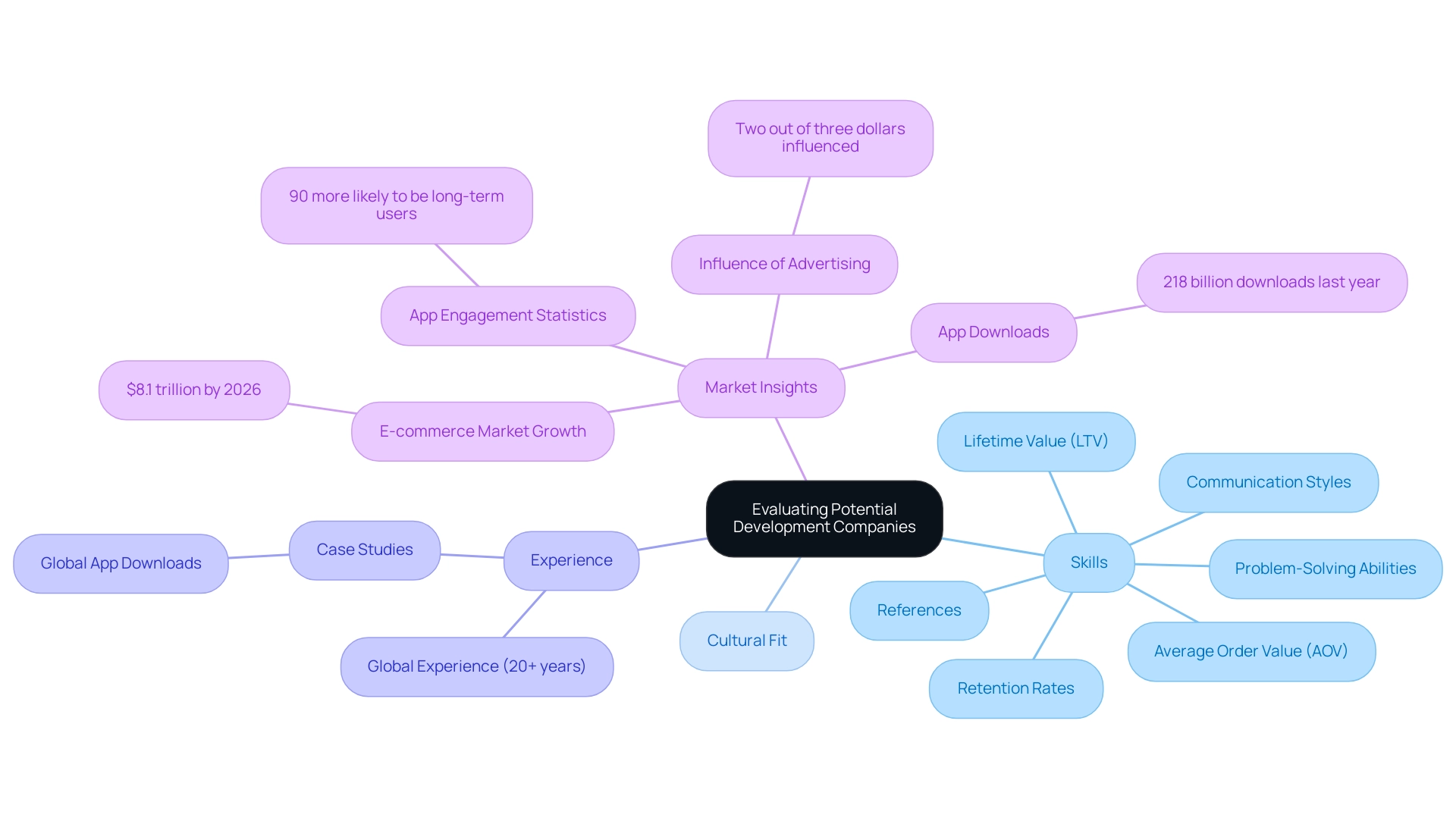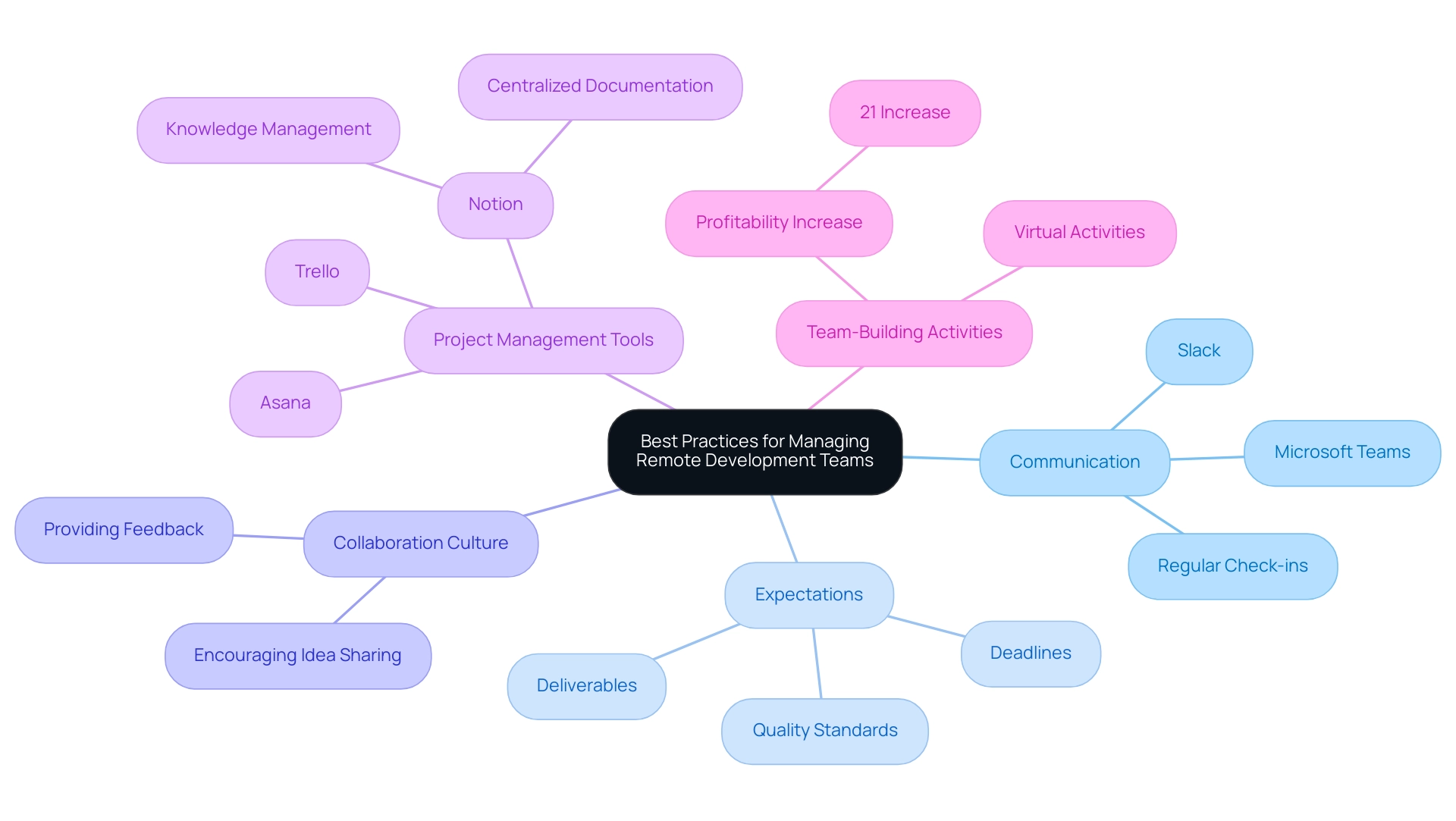Introduction
In the evolving landscape of technology, remote iOS app development has emerged as a pivotal strategy for businesses aiming to tap into global talent while optimizing costs. This approach not only expands the talent pool beyond geographical boundaries but also introduces flexibility and specialized skills that can elevate project outcomes.
As organizations navigate this transition, understanding the nuances of remote collaboration becomes essential. From defining project requirements to evaluating potential development partners, each step is critical in ensuring successful app launches that resonate with users and meet business objectives.
This article delves into the essentials of remote iOS app development, offering insights into best practices, team management strategies, and the importance of aligning project goals with the right development expertise.
With the right approach, companies can harness the full potential of remote teams, driving innovation and enhancing their competitive edge in an increasingly digital marketplace.
Understanding the Basics of Remote iOS App Development
A remote native iOS app development company has emerged as a strategic approach for businesses looking to leverage global talent and optimize costs. This model enables companies to hire a remote native iOS app development company or groups located outside their immediate geographic area, broadening the talent pool while providing significant financial advantages. Key factors to consider include the distinction between in-house and off-site groups, with a remote native iOS app development company often providing flexibility and specialized skills that may not be available locally.
Our tailored e-commerce solutions, backed by over 20 years of global experience, have a proven track record of significantly improving critical KPIs such as retention rates and Average Order Value (AOV). We prioritize building community value by creating products that resonate with users and align with internal goals. Effective communication and project management are essential in a distributed environment.
Utilizing tools like Slack for real-time communication and Trello for task management can streamline operations and enhance collaboration. Furthermore, understanding time zone differences can significantly impact project timelines and team dynamics. By understanding these fundamentals, e-commerce directors can make informed choices when selecting a distant collaboration partner.
The expansion of distance iOS application creation is supported by the latest trends, with forecasts suggesting that a remote native iOS app development company will see a significant rise in adoption rates throughout 2024, along with a reported growth rate of over 30% in distance-based projects. As highlighted by industry specialists, a remote native iOS app development company facilitates distance collaboration that not only encourages innovation but also aligns with the changing requirements of companies navigating an increasingly digital environment. A notable example is the integration of Augmented Reality (AR) in mobile apps, which has expanded beyond tourism and healthcare, as demonstrated by the success of Pokemon Go.
This demonstrates how distributed teams can effectively harness emerging technologies to create impactful user experiences. Additionally, as Artem Dogtiev states, "No doubt – 2021 will witness new advances in Machine Learning to make sense of all sorts of data captured by optical and audio sensors." This highlights the technological advancements that a remote native iOS app development company can leverage, positioning itself for success while harnessing the benefits of a diverse and skilled workforce.
Our clients, such as SHOP.COM and FlipGive, have praised our solutions for their effectiveness in enhancing KPIs and building community engagement, showcasing our commitment to delivering value.

Identifying Your Project Requirements and Team Needs
To lay a solid foundation for your iOS app creation project, begin by clearly outlining your objectives, desired features, and target audience. Understanding the complexity of your app is vital, as intricate applications, particularly in categories like gaming, demand more resources and specialized skills. This complexity will directly influence your budget and timeline; for example, simpler apps might require less investment compared to their complex counterparts.
Setting an average budget is essential, as iOS app creation can differ greatly, with expenses affected by the selected group and project needs. The annual fee for the App Store is $99, while the Play Store charges a one-time fee of $25, which should be factored into your financial planning.
Nayan Sharma, AVP of Technology Presales, emphasizes the importance of robust security for business data and information, underscoring the need for a skilled group that can safeguard sensitive information. Engaging stakeholders within your organization is equally essential to gather insights on the necessary skills and attributes your team should possess. By nurturing this collaborative atmosphere, you can ensure that the chosen partner aligns with your organizational goals and project specifications.
Additionally, mobile application creation typically takes 6 to 9 months, so it's important to plan accordingly. Considering the case study on iOS application creation, the choice between hiring freelance developers or a firm can significantly affect costs—hourly rates for iOS developers range from $20 to $100, while project managers cost between $12 and $40. This comprehensive method of defining your project requirements will not only facilitate effective communication with potential collaborators but also streamline the selection process, ultimately setting your project up for success.

Evaluating Potential Development Companies: Skills and Fit
To effectively choose a company for iOS app creation, it is crucial to begin with an in-depth review of their portfolios, particularly focusing on tailored e-commerce solutions that have been proven to enhance critical KPIs such as:
- Retention rates
- Average Order Value (AOV)
- Lifetime Value (LTV)
Prioritize case studies that showcase the company’s problem-solving abilities and technical competencies, especially those that highlight their global experience spanning over 20 years. Given that app users who engage with an application at least once a week are 90% more likely to become long-term users, understanding how a company has successfully engaged users through their apps can be invaluable.
The iOS app market in 2024 presents numerous opportunities for business owners to attract target audiences and achieve success, making the evaluation of potential partners even more critical. Conducting interviews with potential partners will allow you to assess their communication styles and determine their cultural fit with your team—an essential factor, especially in remote collaboration settings. Furthermore, requesting references and feedback from past clients will provide insight into the company’s reliability and work ethic.
This comprehensive evaluation process not only identifies a partner with the requisite technical skills but also ensures alignment with your group's values and collaborative working style. Additionally, with two out of three dollars spent on mobile devices influenced by advertising, it’s clear that mobile applications play a vital role in the e-commerce landscape. As the e-commerce market is anticipated to hit $8.1 trillion by 2026, and with over 218 billion app downloads logged last year, making informed decisions in your app creation partners is more crucial than ever.
Selecting a partner that can create products resonating with the community and aligning with your internal goals will further enhance your chances of success.

Best Practices for Managing Remote Development Teams
Effectively overseeing distant development groups necessitates the establishment of robust communication channels, making tools such as Slack and Microsoft Teams essential. Regular check-ins and updates are crucial; they not only facilitate progress monitoring but also allow for the timely resolution of challenges. As noted by Global Workplace Analytics, by allowing employees to work from home half the time, U.S. businesses can save roughly $11,000 annually per employee, underscoring the financial benefits of remote work practices.
It's essential to set explicit expectations concerning deadlines, deliverables, and quality standards to align group efforts. Cultivating a collaborative culture can significantly enhance group dynamics—encouraging members to share ideas and provide feedback fosters an environment of innovation and support. Using file sharing services such as Dropbox and Google Drive further improves cooperation among distant colleagues.
Additionally, leveraging project management software like Trello or Asana ensures that tasks are tracked meticulously, thereby enhancing accountability. Implementing these best practices not only contributes to a productive work environment but also drives project success, as evidenced by findings that virtual team-building activities can boost profitability by over 21%. A case study on Notion demonstrates this point, as it functions as a knowledge management tool that centralizes documentation and project notes, enhancing information accessibility and organization within distributed groups.
As noted by industry experts, a structured approach to remote team management can lead to optimized performance and improved outcomes.

Conclusion
Remote iOS app development presents a transformative opportunity for businesses seeking to harness global talent while optimizing costs. By understanding the distinction between in-house and remote teams, organizations can leverage the flexibility and specialized skills that remote developers offer. The growing trend of remote development, projected to accelerate in the coming years, highlights its potential to foster innovation and align with the evolving needs of the digital marketplace.
Establishing clear project requirements and thoroughly evaluating potential development partners are crucial steps in this process. By outlining objectives, understanding complexity, and considering budgetary implications, businesses can ensure they select a team that not only possesses the technical skills but also aligns with their organizational goals. This comprehensive approach enables effective communication and streamlines the selection of a development partner, ultimately setting the stage for successful project outcomes.
Furthermore, implementing best practices for managing remote teams enhances collaboration and accountability, driving project success. Utilizing effective communication tools, setting explicit expectations, and fostering a culture of teamwork can significantly improve productivity and innovation within remote environments. As the e-commerce landscape continues to evolve, the ability to adapt and effectively manage remote development teams will be essential for businesses aiming to thrive in an increasingly competitive market.
In conclusion, embracing remote iOS app development is not just a strategic choice; it is a vital step toward achieving business objectives and enhancing competitive edge. By harnessing the full potential of remote teams, organizations can unlock new avenues for growth and innovation, ensuring that their app launches resonate with users and meet their evolving needs.





